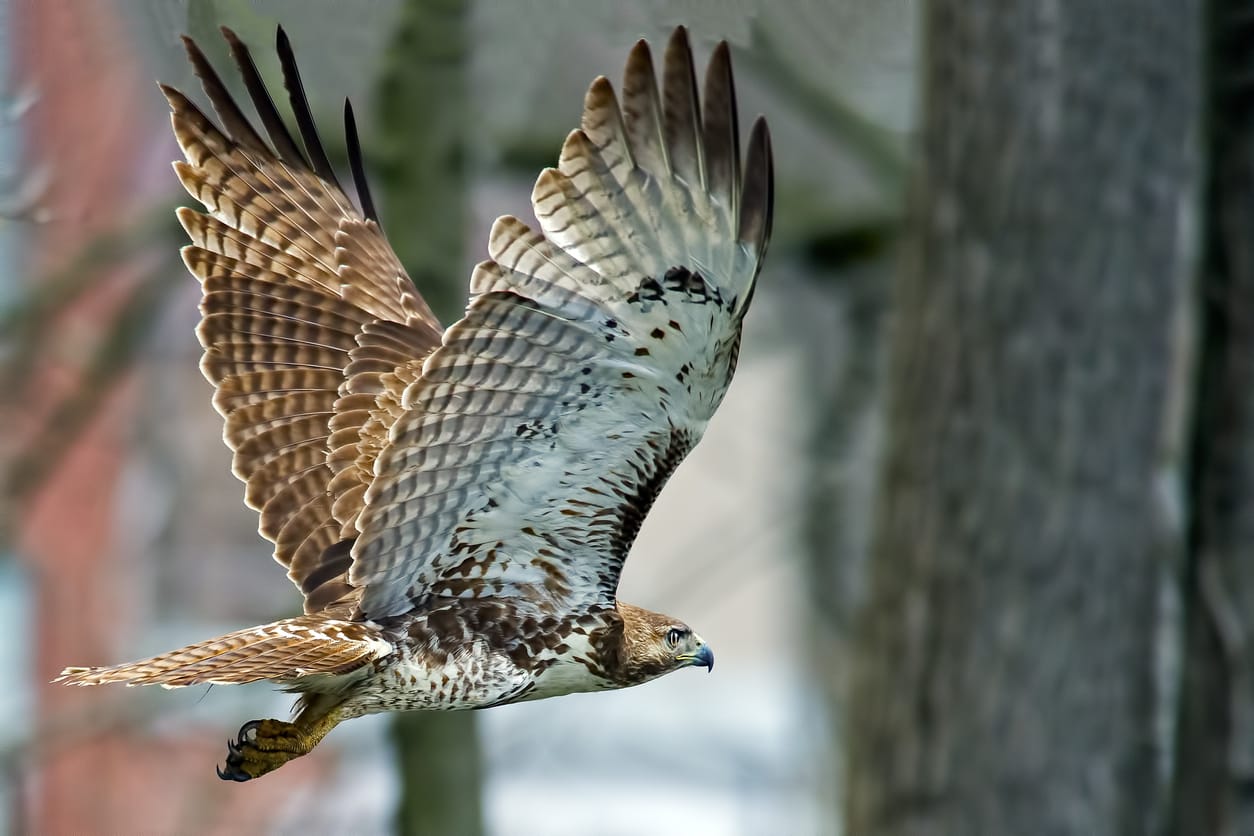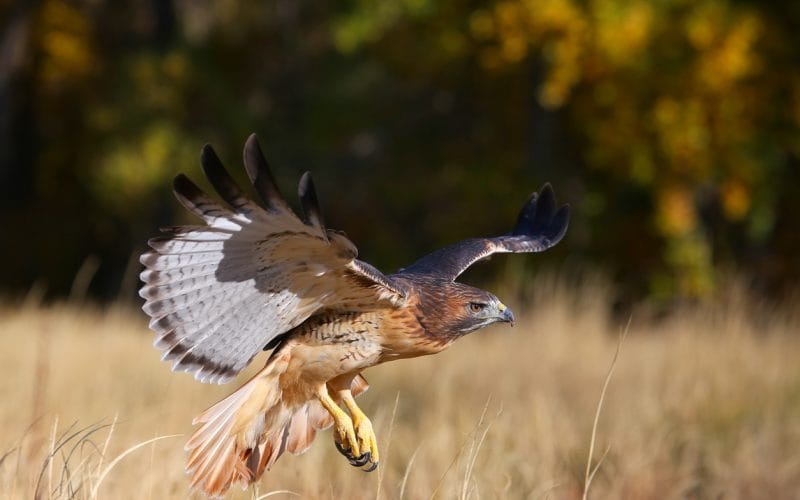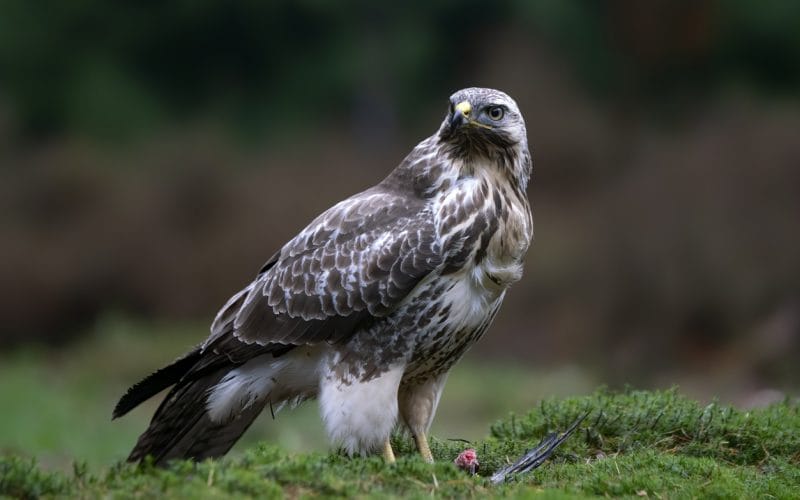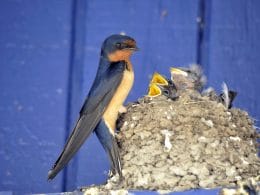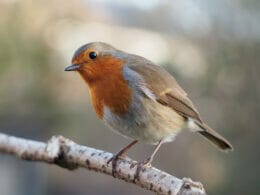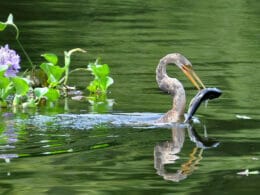Despite its industrialization, Massachusetts made a great effort in preserving many of its woodlands. With nearly 150 state reservations, parks, and forests, the state hosts more than 50 different birds of prey species each year, some of which include eagles, owls, falcons, hawks, and even vultures.
From elusive Northern Saw-whet Owls to majestic Bald Eagles, this article lists some of the most beautiful Massachusetts birds of prey, along with when and where to find them!
Falcons of Massachusetts
Currently, there are about 40 species of falcons worldwide, three of which found homes in Massachusetts: American Kestrels, Merlins, and Peregrine Falcons.
1. American Kestrel

- Scientific name: Falco sparverius
- Length: 13 to 14 inches
- Wingspan: 25 inches
- Weight: 19.2 ounces
American Kestrels are year-round residents of Massachusetts. They’re often spotted near open land and perched atop telephone poles and fence posts.
Author Note: Dubbed as the smallest falcons in North America, American Kestrels are no larger than a standard Blue Jay or American Robin.
American Kestrels are dressed with blue-gray wings, speckled breasts, and rufous backs. Their boldly-patterned faces appear to have a mustache-like stripe below their bills. Females look fairly similar to male American Kestrels, except they don’t have blue-gray wings and their chest markings are a bit more dramatic.
Although they primarily feed on insects, with grasshoppers being their favorites, American Kestrels won’t say no to rodents and small birds if spotted.
2. Merlin

- Scientific name: F. aesalon
- Length: 9.4 to 13.0 inches
- Wingspan: 20 to 29 inches
- Weight: 92.8–129.6 ounces
Merlins, once colloquially known as Pigeon Hawks, are the very definition of small but powerful. Although they’re only slightly larger than American Kestrels, they’re broader, stockier, and much more menacing.
In Massachusetts, Merlins are regularly spotted throughout the year except during summer, where they’re rarely seen. They usually nest in forested edges and openings, as well as coastal areas with flocks of small shorebirds.
Merlins generally feed on small birds like pipits, house sparrows, and larks; all of which they capture in midair. They’d also take on larger birds such as pigeons and sandpipers.
3. Peregrine Falcon

- Scientific name: Falco peregrinus
- Length: 13.4 to 22.8 inches
- Wingspan: 29 to 47 inches
- Weight: 24 to 52.8 ounces
Peregrine Falcons, also known as Duck Hawks, are crow-sized falcons with blue-gray backs, barred underparts, and dark heads. They’re often confused with Cooper’s Hawks and large Gyrfalcons.
Peregrine Falcons are the largest falcons in Massachusetts and most of North America.
In the 1950s, Peregrine Falcons were eradicated in Massachusetts due to pesticide DDT. Although their numbers have exceeded historical highs today, with at least 46 nesting pairs as of 2020, they’re still listed as “Special Concern.”
Peregrine Falcons are the largest falcons in Massachusetts and most of North America. With dive speeds of over 240 mph, these birds of prey are considered the fastest birds on Earth.
Eagles of Massachusetts
Eagles are among the most powerful birds of prey in the world. They’re so strong that they can lift a small deer into the air!
Eagles aren’t rare in Massachusetts, but they aren’t too common either. Two species reside in the state: the patriotic Bald Eagle and the gorgeous Golden Eagle.
4. Bald Eagle

- Scientific name: Haliaeetus leucocephalus
- Length: 30 to 34 inches
- Wingspan: 72 to 85 inches
- Weight: 96 to 224 ounces
With wingspans of up to seven feet, Bald Eagles are considered the largest birds of prey in Massachusetts.
Top Tip: Bald Eagles are perhaps the most recognizable birds of America. They’re the country’s national bird, after all!
These majestic birds have distinctively brown plumage, snowy-feathered heads, white tails, and bright yellow beaks and feet. From a distance, they resemble Turkey Vultures.
Before 2012, Bald Eagles were classified under “Endangered” in Massachusetts. Today, with over 76 territorial pairs of bald eagles in the state, they’re listed as Special Concern. The Massachusetts Division of Fisheries and Wildlife (MassWildlife) has been monitoring and banding bald eagles since 1989 in an effort to repopulate, study, and protect the species.
Bald Eagles thrive in habitats with plenty of fish, such as rivers, lakes, and coastal areas near open water. Although they primarily eat fish, they also consume a variety of small mammals and birds.
5. Golden Eagle
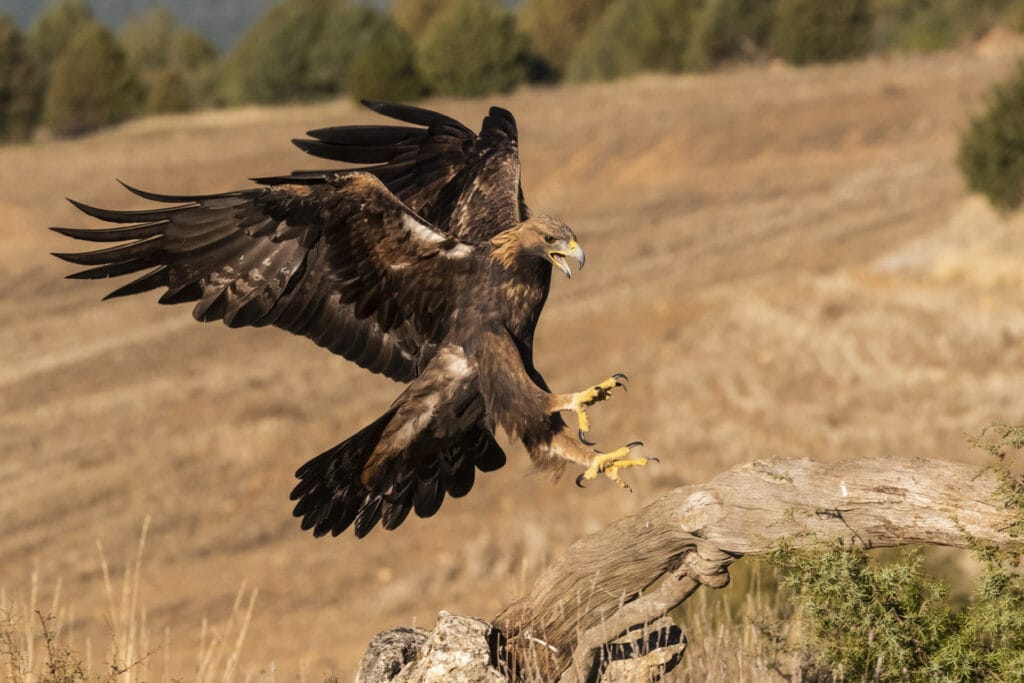
- Scientific name: Aquila chrysaetos
- Length: 26 to 40.2 inches
- Wingspan: 70.9 to 92.1 inches
- Weight: 96 to 160 ounces
Golden Eagles live in the Western half of Massachusetts, soaring above mountains, cliffs, hills, and bodies of water.
Unlike Bald Eagles, who sometimes scavenge morsels of roadkill or steal fish from other birds, Golden Eagles are predators through and through. They regularly take prey up to the size of cranes and foxes.
For this reason, Golden Eagles are praised by Native American tribes for their courage and strength. Many still believe them to have mystical powers.
Golden Eagles aren’t picky eaters. Although they typically prey on small mammals (i.e., marmots, prairie dogs, squirrels, and jackrabbits), they won’t say no to rodents, young pronghorns, and young deer.
Owls of Massachusetts
There are a total of eight owl species in Massachusetts, most of which are year-round residents. They’re found in all sorts of habitats, from dense forests to residential neighborhoods. Here are some of the most notable species:
6. Barred Owl

- Scientific name: Strix varia
- Length: 16 to 25 inches
- Wingspan: 38 to 49 inches
- Weight: 26 ounces
Barred Owls are year-round residents of Massachusetts. They’re famous for their deep, resonant “who cooks for you, who cooks for you all?” call, and beautiful brown-and-white plumage.
Author Note: Unlike most owls, Barred Owls are diurnal birds. They still prefer hunting at night, but they’re just as active during the day.
Although they’re only slightly smaller than their Great-Horned Owls cousins, they’re far less aggressive. When territorial disputes occur, they’re the first ones to leave.
7. Eastern Screech-Owl
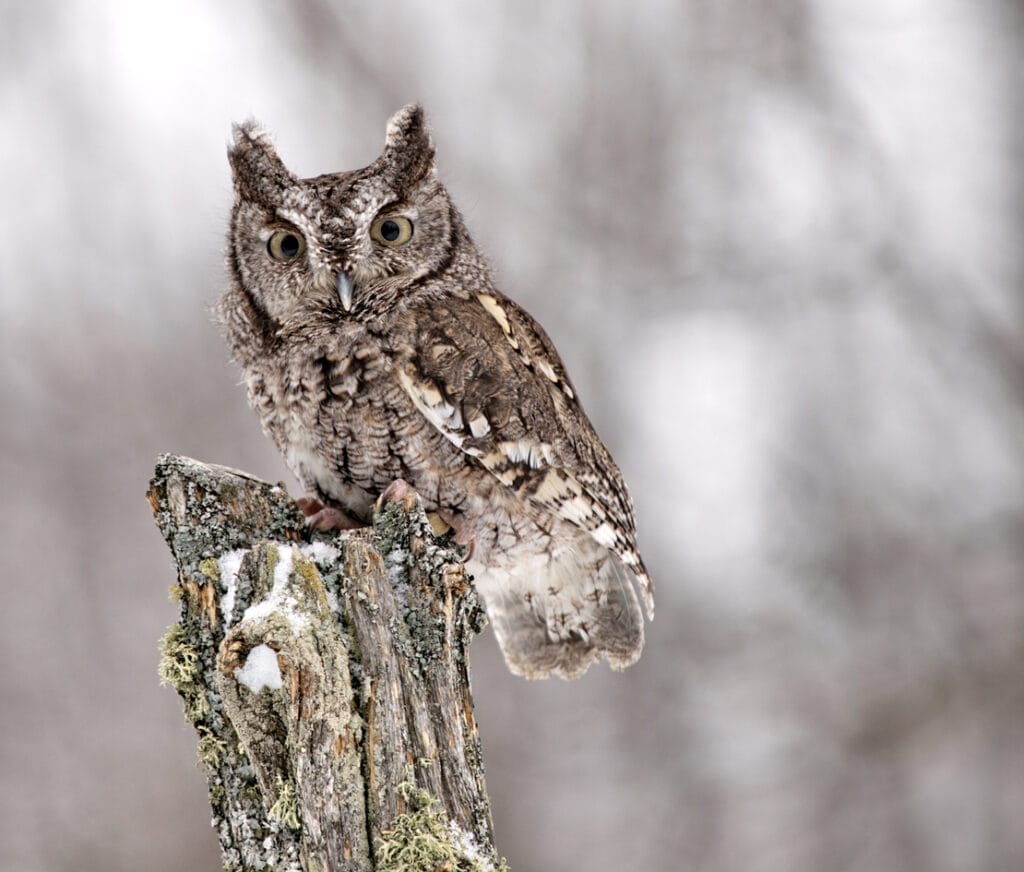
- Scientific name: Megascops asio
- Length: 7 to 10 inches
- Weight: 5.60 ounces
- Wingspan: 19 to 24 inches
Measuring at only 7 to 10 inches, Eastern Screech-Owls are among the smallest owls in Massachusetts. They’re commonly found east of the Rockies and second-growth forests, particularly at lower elevations.
Their trills, screeches, moans, and whinnies have echoed through the forests of Massachusetts for centuries.
With their round, stocky bodies and proportionally large heads, Eastern Screech-Owls are almost identical to Western Screech-Owls. They mostly hunt at night but also at dawn and dusk if they deem it necessary.
Eastern Screech-Owls often live in abandoned woodpecker nests and other animal-made cavities. They’d lay their eggs on whatever debris was left inside, rarely adding their own nesting material.
8. Northern Saw-whet Owl

- Scientific Name: Aegolius acadicus
- Length: 6.5 to 9 inches
- Wingspan: 16.5 to 22.2 inches
- Weight: 1.9 to 5.3 ounces
Like Barred Owls, Northern Saw-whet Owls are year-round residents of Massachusetts. They’re believed to be the smallest owls in Eastern US at only 6.5 to 9 inches long.
Northern Saw-whet Owls are elusive creatures, so they’re rarely seen or heard in the wild. For this reason, the Mass Audubon Wildlife Sanctuary collaborated with Project Owlnet—a continent-wide project created to track Northern Saw-whet Owls—to further advance the scientific understanding of these birds.
These owls live in dense forests and nest in tree cavities left by other small animals, particularly Pileated Woodpeckers. They mostly feed on small mammals, aquatic insects, crustaceans, and passerines like sparrows, swallows, chickadees, and kinglets.
9. Long-eared Owl
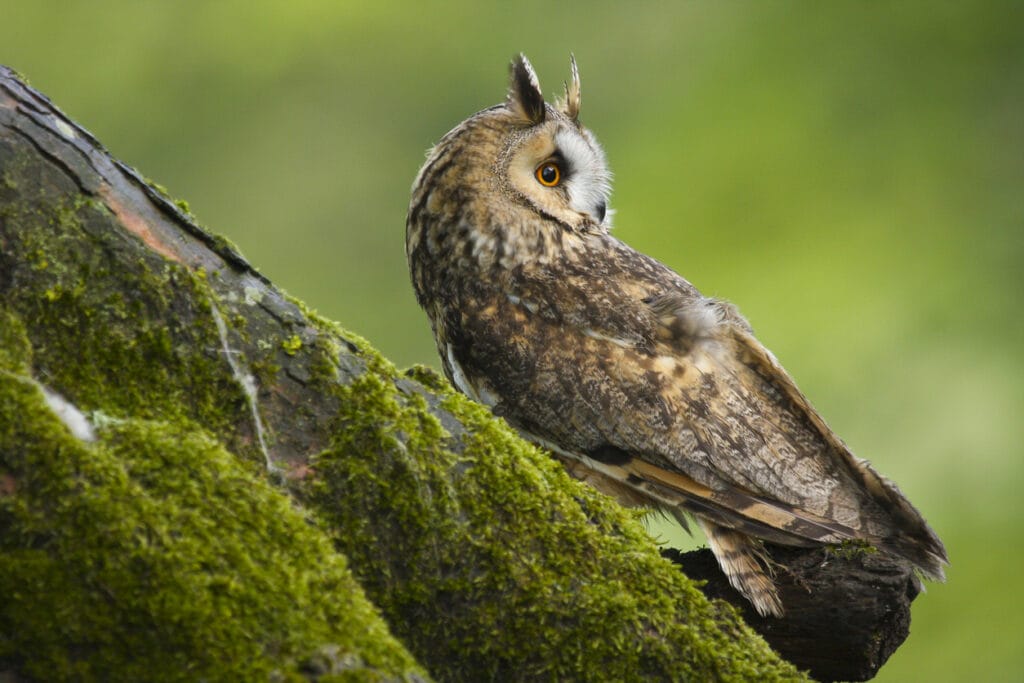
- Scientific name: Asio otus
- Length: 13.7 to 15.7 inches
- Wingspan: 35.5 to 40 inches
- Weight: 8.80 ounces
Long-eared Owls, also known as Cat Owls or Lesser Horned Owls, are famous for their “shocked” appearance. Their eyes are almost comically large and their long ear tufts point upwards, resembling exclamation marks.
Author Note: Long-eared Owls are among the most vocal owl species on Earth, but they’re rarely heard outside the breeding season. They produce a variety of sounds, ranging from hoots, screeches, and whines, to squeals, meows, and even barks.
10. Short-eared Owl

- Scientific name: Asio flammeus
- Length: 13 to 17 inches
- Wingspan: 33.5 to 40.5 inches
- Weight: 7.3 to 16.8 ounces
Short-eared Owls appear in Massachusetts during winter. You’ll likely spot them near open areas such as grasslands, large forest clearings, and meadows in search of rats, voles, and other small mammals.
Although they’re diurnal, they’re just as elusive as Northern Saw-whet Owls. They aren’t very vocal and they’d only make noise when they’re threatened or when warning predators to stay away.
Despite the namesake, Short-eared Owls don’t have “ears,” or, rather, ear tufts. They have fully round heads, short necks, sandy bellies, and light or dark-brown backs depending where they come from.
11. Great Horned Owl

- Scientific name: Bubo virginianus
- Length: 18.1 to 26 inches
- Wingspan: 55.2 inches
- Weight: 50 ounces
Great Horned Owls, also known as Tiger Owls, are the largest owl species in Massachusetts and the third-largest owls in the world (after Blakiston’s Fish Owls and Eurasian Eagle Owls).
As the name suggests, Great Horned Owls have horn-like ear tufts protruding from their heads. They have mottled gray-brown plumage, reddish-brown faces, and intimidating barrel-shaped bodies.
Although they’re year-round residents of Massachusetts, they can only be heard in winter when they’re seeking mates. They mostly live in Massachusetts’s evergreen forests, swamps, and tundra edges, but can also be spotted in cities, parks, and orchards.
Great Horned Owls are best admired from afar. Although they aren’t actively aggressive, they won’t hesitate to attack when threatened.
12. Barn Owl

- Scientific name: Tyto alba
- Length: 12.6 to 15.8 inches
- Wingspan: 39.4 to 49.2 inches
- Weight: 14.1 to 24.7 ounces
Known for their white, heart-shaped faces, Barn Owls are found year-round across Massachusetts.
As the name suggests, Barn Owls hide in dark, quiet places such as abandoned barns, chimneys, church steeples, and other man-made structures.
Unlike Great Horned Owls, Barn Owls are fairly docile creatures. If required, they don’t mind coexisting with other owl species in locations with an abundance of sugarcane and rice. They rarely show aggression towards other owls. If a predator approaches, they’d fly off rather than fight.
Hawks of Massachusetts
Hawks are grouped into two main divisions; stocky, broad-winged Buteos and round-winged, long-tailed Accipiters. Among all eight hawk species found in Massachusetts, these species are the most common:
13. Cooper’s Hawk
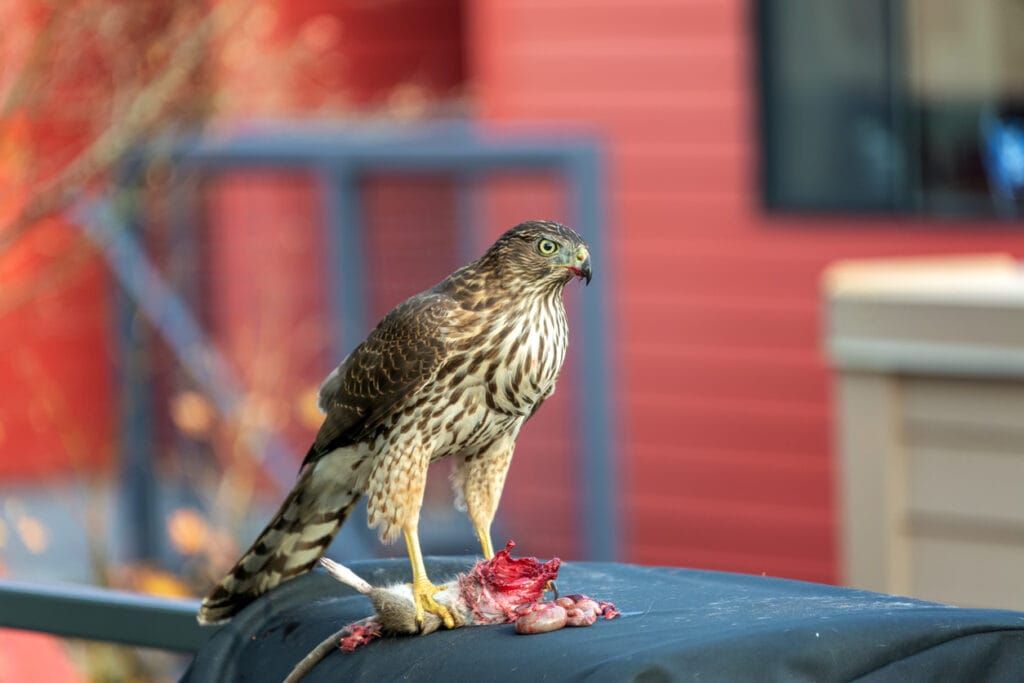
- Scientific name: Accipiter cooperii
- Length: 14 to 20 inches
- Wingspan: 29 to 37 inches
- Weight: 18 to 20 ounces
Among the three bird-eating Accipiter Hawks in Massachusetts, Cooper’s Hawks are the most widespread.
Top Tip: They closely resemble their Sharp-shinned Hawks cousins with their warm-reddish bands and solid blue-gray above. Compared to the latter, though, Cooper’s Hawks have a much larger head and body.
Like most hawks, Cooper’s Hawks are found in temperate forests, leafy subdivisions, and Massachusetts’s mountainous regions. They’re most active during the early morning.
14. Red-tailed Hawk
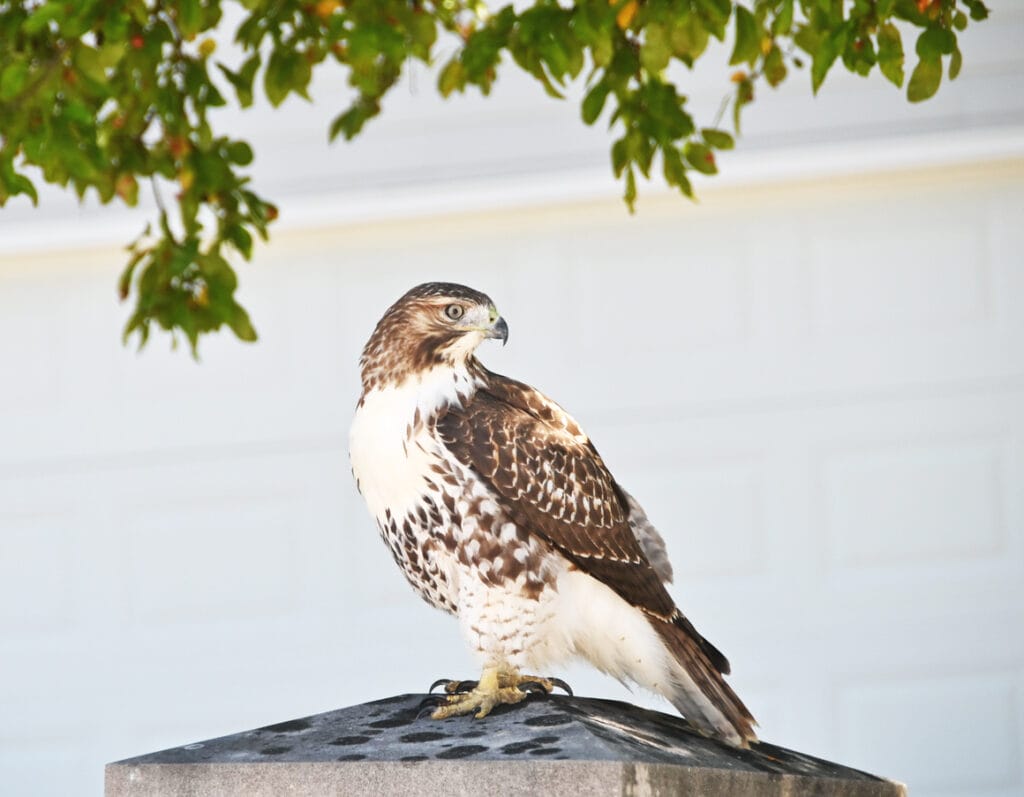
- Scientific name: Buteo jamaicensis
- Length: 17.7 to 25.6 inches
- Wingspan: 44.9 to 52.4 inches
- Weight: 24.3 to 51.5 ounces
Red-tailed Hawks, also known as Chicken Hawks, are one of the most common Buteo hawks in Massachusetts. They have streaked bellies, chocolate-brown backs, and cinnamon-red tails.
About 10% to 20% of the species have dark and intermediate color morphs in Massachusetts.
Red-tailed Hawks can be spotted across the state in open fields, fence posts, tall trees, and telephone lines.
15. Rough-Legged Hawk

- Scientific name: Buteo lagopus
- Length: 18.5 to 20.5 inches
- Wingspan: 52 to 54.3 inches
- Weight: 25.2 to 49.4 ounces
Rough-legged Hawks, sometimes called Rough-legged Buzzards, appear in Massachusetts in winter. They nest in cliffs, treeless tundras, and outcroppings of boreal forests.
Unlike other buteo hawks, Rough-legged Hawks hunt through kiting. Instead of perching from brand to brand in search of prey, they actively hover in place. They primarily feed on small mammals and rodents like voles and lemmings.
Conclusion
There you have it, folks; 15 birds of the most eye-catching birds of prey in Massachusetts!
If you’re planning to bird-watch in the state, the above species are a great place to start. Most are found year-round in dense forests, wood lots, grasslands. You’d even find some in residential neighborhoods if you’re lucky.
We hope you enjoyed our guide on the most common Massachusetts birds of prey.
FAQ
The Northern Goshawk is a distinctive blue grey color and can be found in Massachusetts. However, they are quite secretive so check the eBird sightings list to see where they have been seen. 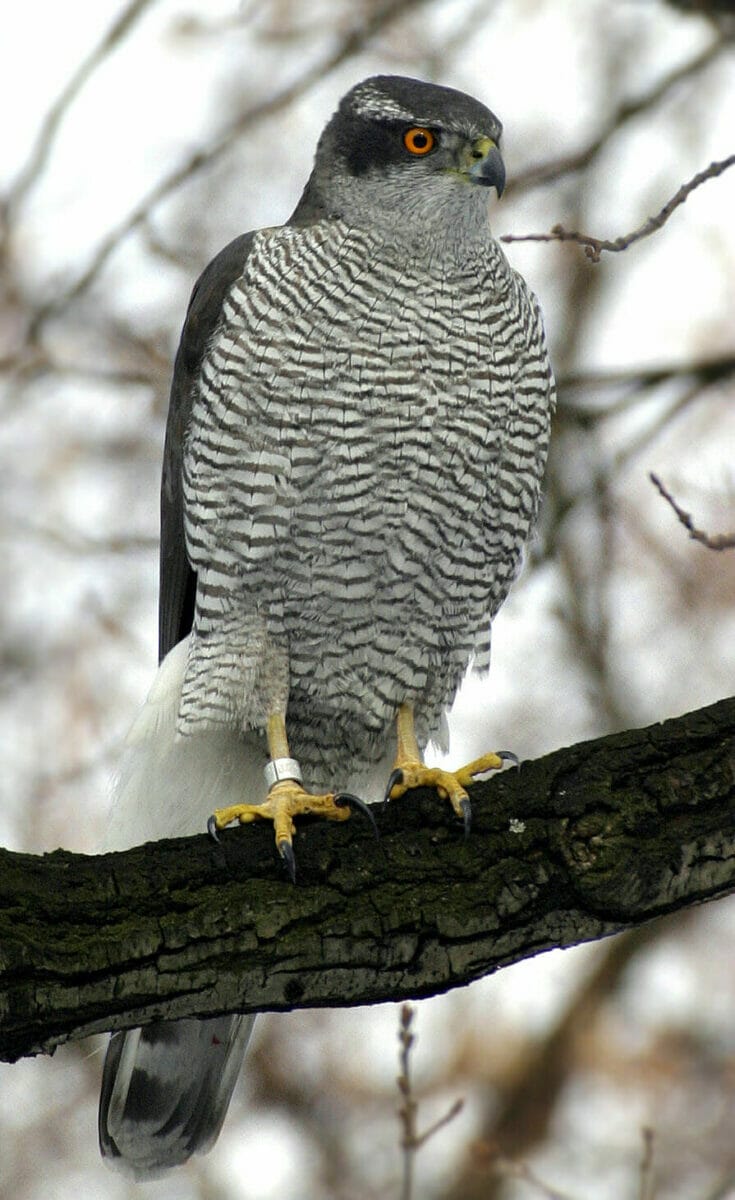
Yes, there are Ospreys resident and nesting in Massachusetts. They can be found close to large bodies of water.
A Steller’s Sea Eagle has been reported along the coast of Massachusetts several times in the last few years. Another reason to head to the beach!




